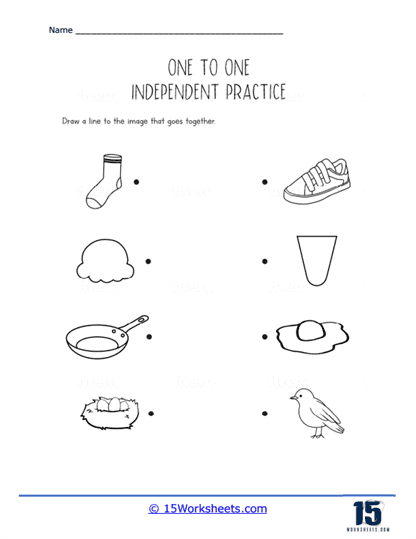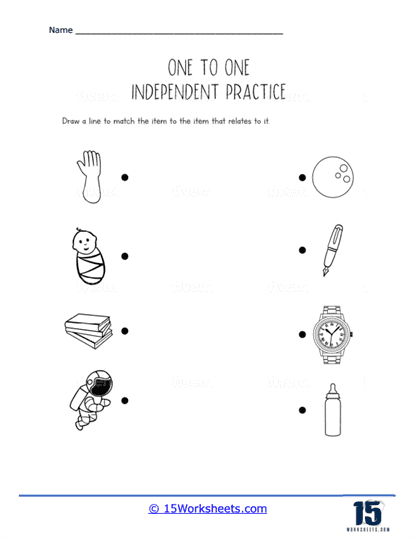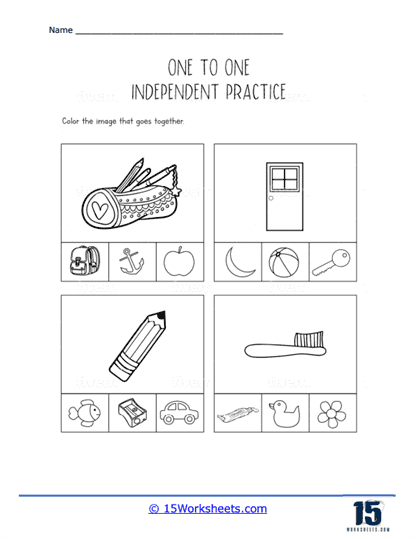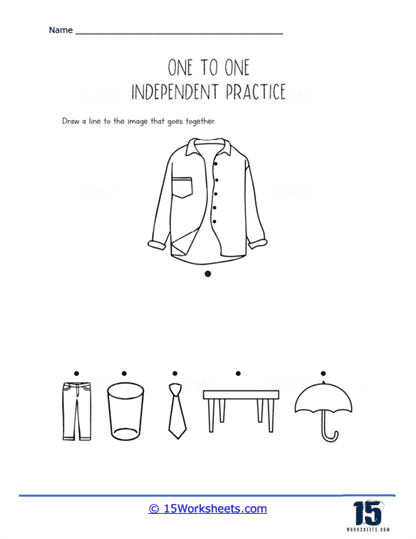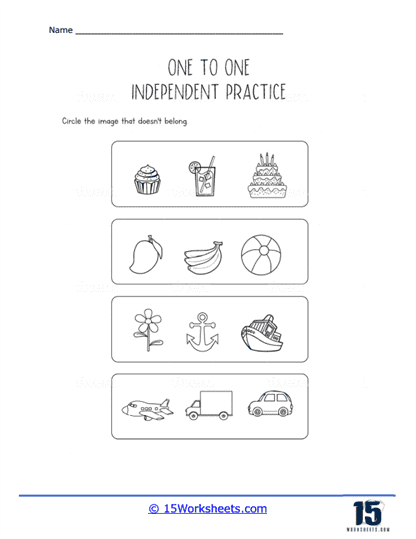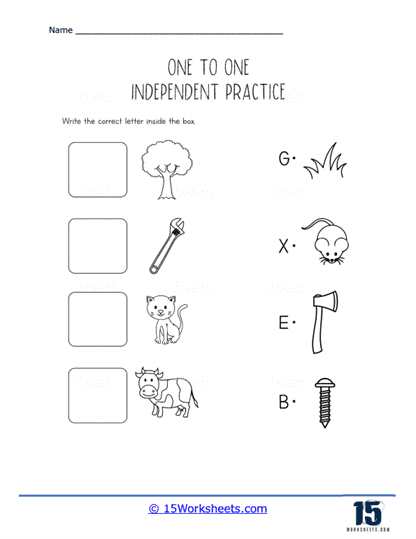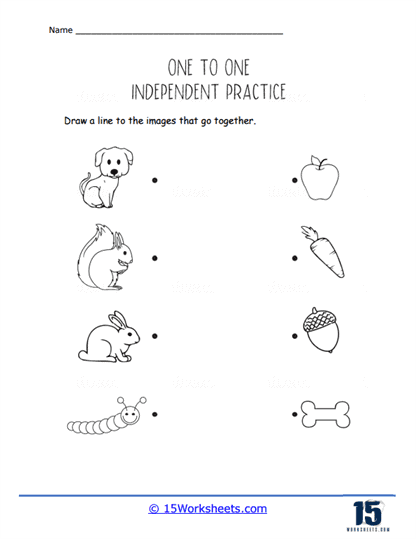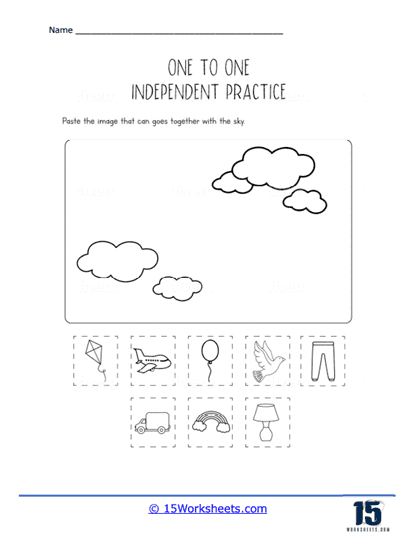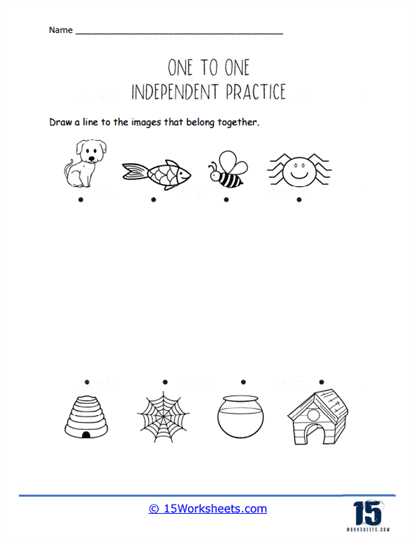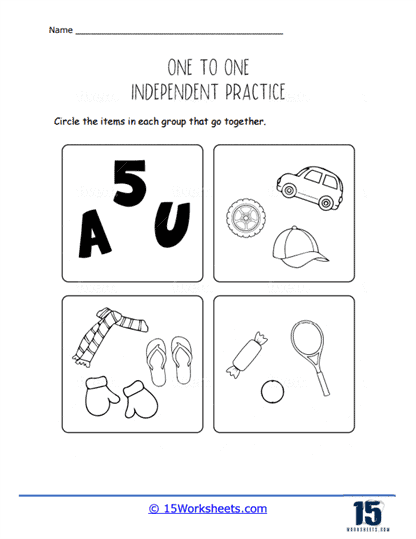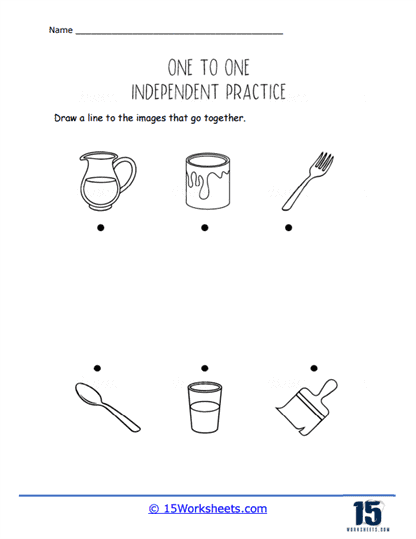1 to 1 Relationships Worksheets
About These 15 Worksheets
These worksheets were created to help students understand the concept of one-to-one correspondence. One-to-one correspondence refers to the idea that each object or item being counted or matched corresponds to one and only one other object or item. These worksheets provide exercises and activities that allow students to practice and reinforce this concept.
The main purpose of 1 to 1 Relationships Worksheets is to develop students’ counting skills, number recognition, and the ability to establish one-to-one relationships between objects or quantities. These worksheets are often used in early math lessons to lay the foundation for more advanced mathematical concepts. They include a variety of activities and exercises that involve counting, matching, or sorting objects. For example, students may be asked to count a set of objects and draw lines to match each object with its corresponding numeral.
These worksheets feature visual representations, such as pictures or objects, where students are required to count and match them with the correct number. This helps students establish a connection between the numeral and the corresponding quantity. They will often involve grouping or sorting objects based on specific attributes. Students might be asked to sort a collection of objects into pairs or sets, ensuring that each object has a corresponding match.
The worksheets provide ample opportunities for students to practice and reinforce their understanding of one-to-one correspondence. By engaging in these activities, students develop their counting skills, learn to recognize numerals, and establish the concept of matching one object with one other object.
What are 1 to 1 Relationships?
In mathematics and education, a one-to-one (1-to-1) relationship refers to the concept of pairing or matching each element in one set with exactly one element in another set. It is an essential concept in early math education and helps children understand the foundation of counting, addition, and subtraction.
In the context of teaching children about numbers, a 1-to-1 relationship means that for each object being counted, there is one corresponding number. For example, when counting toys, each toy represents a distinct number in the sequence (1, 2, 3, etc.). Establishing this relationship is crucial for children to develop accurate counting skills.
Teaching 1-to-1 relationships can be done through various activities:
Counting and Pairing Objects – Use everyday objects, like toys or snacks, and have the child count them one by one, saying the numbers out loud. This helps them understand that each object is associated with a unique number in the counting sequence. Create two sets of objects and have the child match the items from one set to the items in the other set, establishing a 1-to-1 relationship between the objects in the two sets.
Finger Counting – Encourage children to use their fingers to represent numbers and count. This physical representation helps them understand the connection between numbers and real-world objects.
Number Lines – Draw or use a number line to help children visualize the relationship between numbers and their positions in a sequence.
Games and Puzzles – Use matching games, puzzles, or activities that require children to pair items or numbers, reinforcing the concept of 1-to-1 relationships.
By understanding and mastering 1-to-1 relationships, children build a strong foundation for learning more advanced math concepts in the future.

